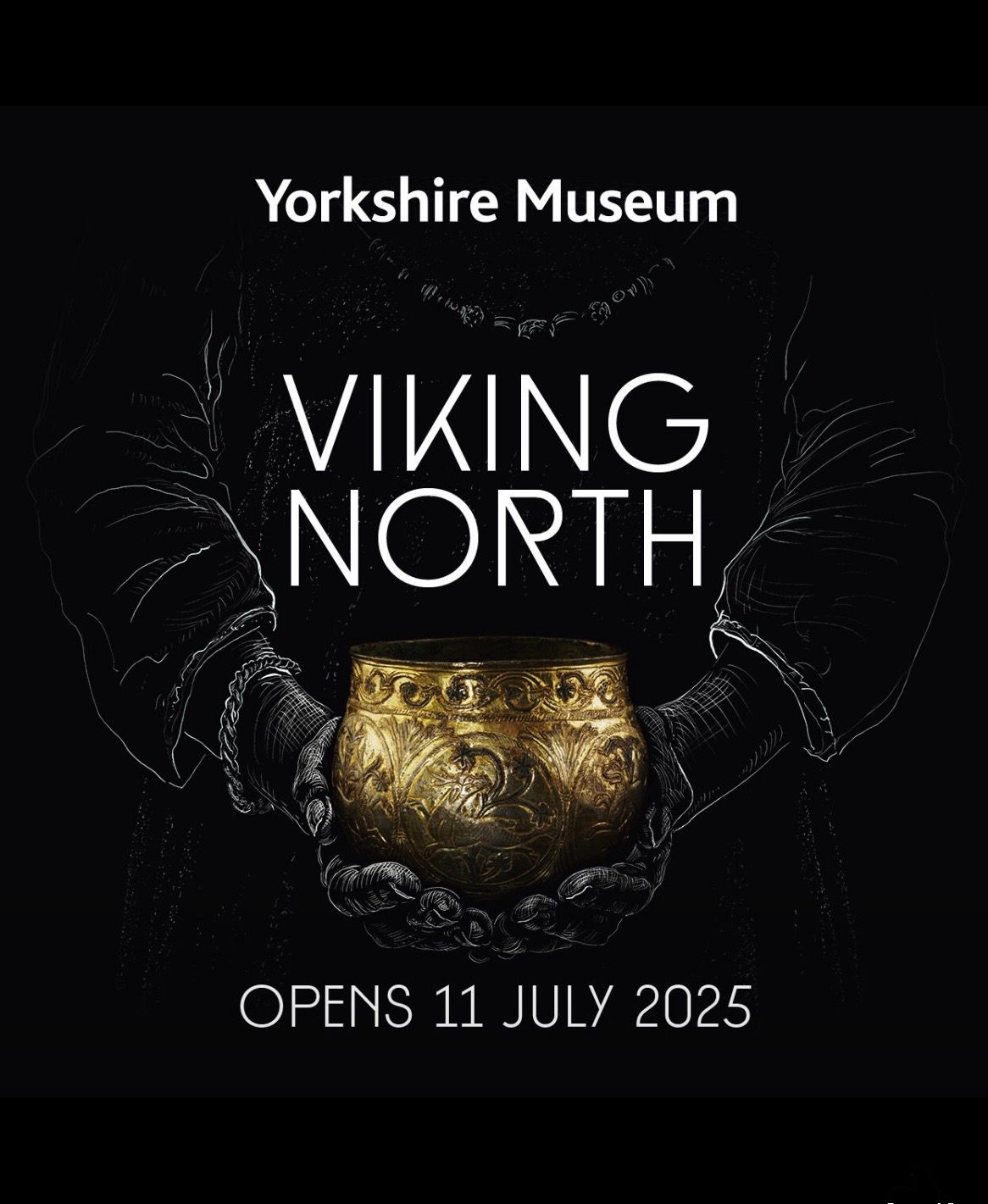Viking Treasures Reveal the North’s Power Base As the premier museum in the north of England for ancient objects and rare finds, The Yorkshire Museum in the city of York, announces its forthcoming major exhibition, Viking North, which opens Friday 11 July 2025. Filled with magnificent objects, many unseen for generations and others which have never been on public display, this is the best collection of Viking finds to be shown outside London and tells the story of the Viking Age in the North of England from 866 to 1066. Underpinned by new archaeological research and cutting-edge technology, the exhibition combines objects from Yorkshire Museum’s own collection, the Vale of York hoard, co-owned with the British Museum, and specially loaned national and regional items including objects from the Viking Army Camp at Aldwark in North Yorkshire. This combination of artefacts shown together for the first time, reflect the north as the power base for the Vikings. Many of these items in gold and silver are of high value and prestige – our version of ‘bling’ – that deemed to show the power, wealth and skills of the Viking people who lived in Yorkshire and the wider north of England. Dr Adam Parker, Curator of Archaeology at York Museums Trust says: “Viking North is a story of geopolitical change and a clash of cultures. A story enhanced by the inclusion of loans from other museum partners and private individuals. This exhibition will enable generations of visitors to benefit from the successes of these partnerships. When the Viking Great Army arrived in the North of England in AD 866, everything changed. Anglo-Saxon kings were defeated, new territories and allegiances rose and fell, new identities were forged, and new international connections were made. The story will be brought alive by the emergent research into these temporary, mobile towns in the late 9th century as these settlers expanded their geographical locations and made England their home. This major exhibition is a chance to marvel at, explore and understand the true story of the Vikings in the north.” This is the largest group of Viking objects on display in England with artefacts displayed across five themes within Vikings North: Viking Great Army Invasions From Yorkshire to the World: International Links Making of Viking Age England: Danelaw and Jorvik Hammer, Cross, Beasts and Dragons: Objects and Art Change and continuity: Yorkshire and the North Displayed with added atmosphere alongside the internal ruins of the Abbey at Museum Gardens on which the Yorkshire Museum is built, the world class objects on display include: The renowned York Helmet found in Coppergate in York – the best preserved helmet from Early Medieval England. A Silver-gilt bowl found with sword in a Viking burial in Cumbria. The Bedale Hoard, an extraordinary collection of precious items including silver from the Middle East. A Silk Cap preserved in the waterlogged soil of Coppergate in York evidencing the imported style and prosperity that the Vikings enjoyed The Vale of York Hoard; 700 pieces of gold and silver jewellery and coins found near Harrogate in 2007 – the most significant Viking silver find in 150 years. A Bone Pricker and pins presenting strange and unusual beasts as an important elements in Viking art. The exhibition additionally includes A newly-discovered and unparalleled Thor’s pendant made in silver with gold inlay reflecting pagan belief. A Stone Cross, the finest piece of Anglo-Scandinavian carving from York. A Walrus Ivory seal which, when pressed into wax, gave tax collector Snarrus’ his official signature and displayed his Norse name. Viking North is shown alongside current exhibitions, including Star Carr: Life After the Ice, and will run until 2027. These concurrent exhibitions enable us to place the Vikings in the context of the history of Britain and the Viking influences in the North of England. To compliment Viking North, York Museums Trust has created a programme of engaging events, including those appropriate for schools and groups, with the exhibition extending a strong leaning towards an adult audience.

